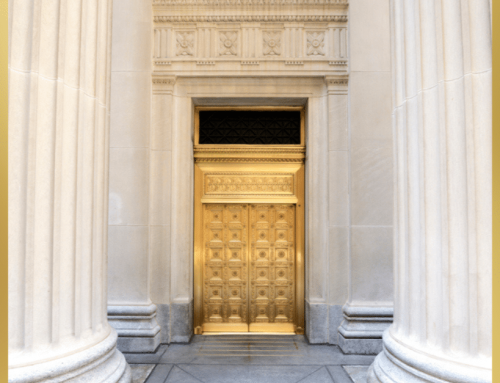In just the first six months of fiscal year 2025, the U.S. government spent $582 billion on interest payments—putting us on pace to exceed what we spend annually on national defense. And not a single dollar of those interest payments came from a surplus. We borrowed every penny. This is the definition of unsustainable. Gold can be your anchor in a storm.
How Did We Get Here?
Every time the government issues Treasury securities—whether short-term bills or long-term bonds—it takes on the obligation to pay interest. That interest burden has grown sharply due to the size of the national debt and the rise in interest rates. In fiscal year 2023, total interest expense reached $678 billion, and we’re now on track to far exceed that in 2025. Why does this matter? Because interest on the debt is one of the fastest-growing categories of federal spending. With over $34 trillion in total debt, even modest increases in rates now produce enormous additional costs. According to the Treasury Department, the average interest rate on the national debt continues to climb—and so do the risks.
Borrowing to Pay the Interest?
Yes. That’s exactly what’s happening. Imagine putting all your monthly interest charges on a credit card—and then using a new credit card to pay off the old one. That’s essentially how the U.S. government is financing itself. This kind of compounding debt creates a fiscal trap—one that becomes harder to escape with each passing year. And the consequences aren’t theoretical.
Warning Signs in the Bond Market.
At some point, creditors begin to ask hard questions. If the U.S. is borrowing more just to pay interest, what does that say about long-term solvency? Investors may demand higher yields to compensate for perceived risk—or, worse, reduce their demand for Treasury securities altogether. This is particularly concerning when foreign buyers, who hold a significant portion of U.S. debt, begin to pull back. If confidence erodes, the U.S. could face a surge in borrowing costs, which would further increase the deficit in a vicious cycle. This is how bond markets become unstable. And this is how even so-called “risk-free” assets start carrying risk premiums. Eventually, the dollar itself becomes vulnerable.
The Other Headwind:
Persistent Deficit Spending. Beyond the rising interest costs, there’s another persistent issue: the U.S. continues to run massive annual deficits—projected at over $1.5 trillion this year alone. Despite historically high tax revenues, spending continues to far outpace income. And there’s little political appetite to rein it in. This means we’re not just borrowing to pay off old debt—we’re borrowing more to fund everyday operations. The combination of rising interest costs and unrelenting deficit spending creates a dangerous feedback loop. Debt levels climb, credit risk increases, and investor confidence starts to erode. Markets may tolerate this imbalance—for a time. But eventually, the bond market may force a reckoning. And when that happens, the consequences could be swift and severe.
What This Means for Your Portfolio.
The risk here isn’t just to government finances—it’s to your personal wealth. Dollar-denominated assets may lose purchasing power. Inflation becomes harder to control. Market volatility increases. That’s where physical gold plays a critical role. Gold doesn’t rely on anyone’s promise to pay. It carries no counterparty risk. It’s not subject to policy errors or debt monetization. For over 5,000 years, gold has been trusted as a store of value precisely because it holds purchasing power when paper currencies falter. Central banks understand this. That’s why they’re buying gold at record pace.
Gold Isn’t About Fear—It’s About Foresight.
Owning physical gold isn’t a bet against the system—it’s a hedge for when the system buckles under the weight of its own excess. With growing debt burdens, rising interest costs, and early warning signs in the bond market, now is the time to consider how gold fits into your strategy. This isn’t about trying to time the market. It’s about positioning yourself before the storm becomes obvious to everyone else.
Take the Next Step in Securing Your Wealth. If you’re thinking about how to protect your portfolio in this environment, I’d be happy to share what I’ve learned. Because in an era of mounting debt and a weakening dollar, gold remains an anchor.
This article is for informational and educational purposes only and should not be construed as investment advice. The views expressed are those of the author and do not constitute a recommendation to buy or sell any asset. Always consult with a qualified financial advisor before making investment decisions.






